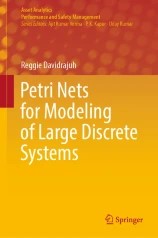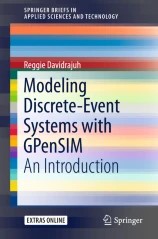A tool for modeling, simulation, and performance evaluation of discrete-event systems
GPenSIM
General-purpose Petri Net Simulator
For MATLAB Platform
Designed & developed by:
Reggie Davidrajuh
Email:
Reggie.Davidrajuh@uis.no
University of Stavanger, Norway
Commendation for the software GPenSIM:
|
The Adelaide (Australian) research team about GPenSIM: Cameron, A., Stumptner, M., Nandagopal, N., Mayer, W., & Mansell, T. (2015) “Rule-based peer-to-peer framework for decentralised real-time service oriented architectures.” Science of Computer Programming, 97, 202-234. Elsevier.
“Although there are many Petri Net modelling tools that support marked graphs, the GPenSim [30] modelling tool is ideal, primarily due to its flexibility in being able to control the system via the model to incorporate embedded computational components that can vary the token holding times.” |
The multinational research team about GPenSIM: Mutarraf, U., Barkaoui, K., Li, Z., Wu, N., & Qu, T. (2018). “Transformation of Business Process Model and Notation models onto Petri nets and their analysis,” Advances in Mechanical Engineering, 10(12), 1687814018808170.
“Several tools exist for Petri net modeling such as SPNP, INA, CPN Tools, GPenSIM, and Renew Tool. We choose GPenSIM for analysis since it has more functionalities (i.e. mathematical formulas) as it is embedded in the MATLAB environment, which makes the simulation to be faster; the only restriction is that it does not have a graphical view. The integration with MATLAB can also harness diverse toolboxes available in the MATLAB environment by combining GPenSIM with the Control System Toolbox. The advantages of GPenSIM over other toolboxes are as follows: we can add probability to the gateways, time can be easily added to transitions, and siphons and invariants can also be found easily.” |
GPenSIM Software:
GPenSIM v.10 Software + Installation Guide
GPenSIM Books:
Book-I: A simple GPenSIM User Manual
Online resources:
|
|
Book review on ACM Computing Reviews, March 25, 2019: “It offers a guided tour of GPenSim’s features, emphasizing its generality and extensibility.” … “The book includes 38 detailed examples illustrating the functions of the program.
Together with the program, it provides a very accessible laboratory to support courses or self-study based on one of the classical texts on Petri nets and discrete event modeling.” -- H. Van Dyke Parunak |
Book-II: On Modular Petri Nets
Online resources:

Book-III: on Colored Petri Nets (coloring of tokens, resources, and cost calculations)
Online resources:

